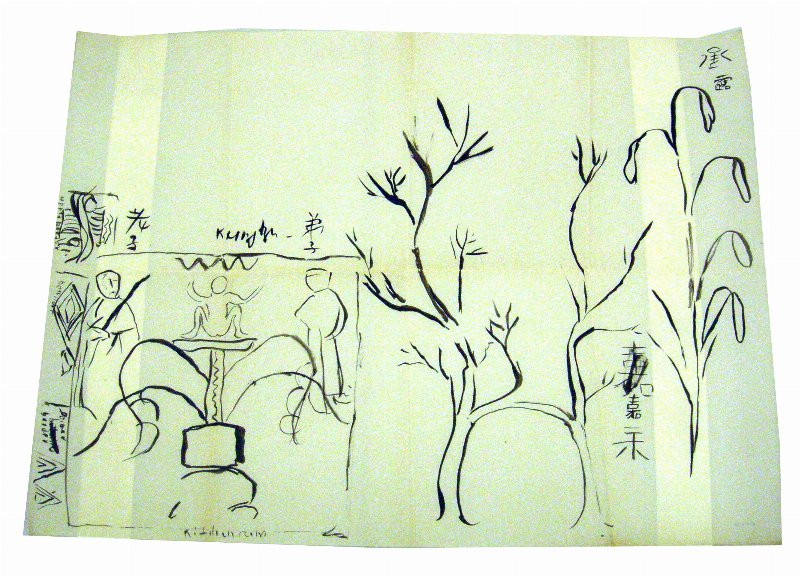| Object Number | 85-37-72 |
| Current Location | Collections Storage |
| Culture | Chinese |
| Provenience | China | Jiangsu |
| Date Made | 1930's |
| Section | Asian |
| Materials | Watercolor | Paper |
| Iconography | Acrobat | Drum | Tree |
| Inscription Language | Chinese Language | English Language |
| Description | Black watercolor on white paper. Hasty brush-and-ink sketch of scenes on Han dynasty stone tomb door with low-relief carvings from Sheyang 射陽 in Baoying 寶應 county, Jiangsu on the left hand side. The tomb door was discovered in the 18th c. and remained in Baoying County until the 1940s. Although many high quality rubbings were made and survive, the current whereabouts of the original stone are unknown. The scene reproduced in the sketch shows a drum with acrobats. The right-hand side reproduces some details from the Eastern Han Wu rui tu 五瑞圖 ‘Diagram of Five Auspicious Things’, carved in 171 CE into the side of a gorge in Chengxian County, Gansu, to commemorate the construction of a road. The sketch was presumably based on a rubbing taken from the original carving. Like the original, it has text labels for ‘Excellent millet 嘉禾’ and ‘Receiving the dew 承. This ink painting may have been done by Anneliese Gutkind-Bulling based on illustrations in her book "The Meaning of China's Most Ancient Art". |
| Credit Line | Gift of Anneliese Gutkind-Bulling, 1985 |
Report problems and issues to digitalmedia@pennmuseum.org.


